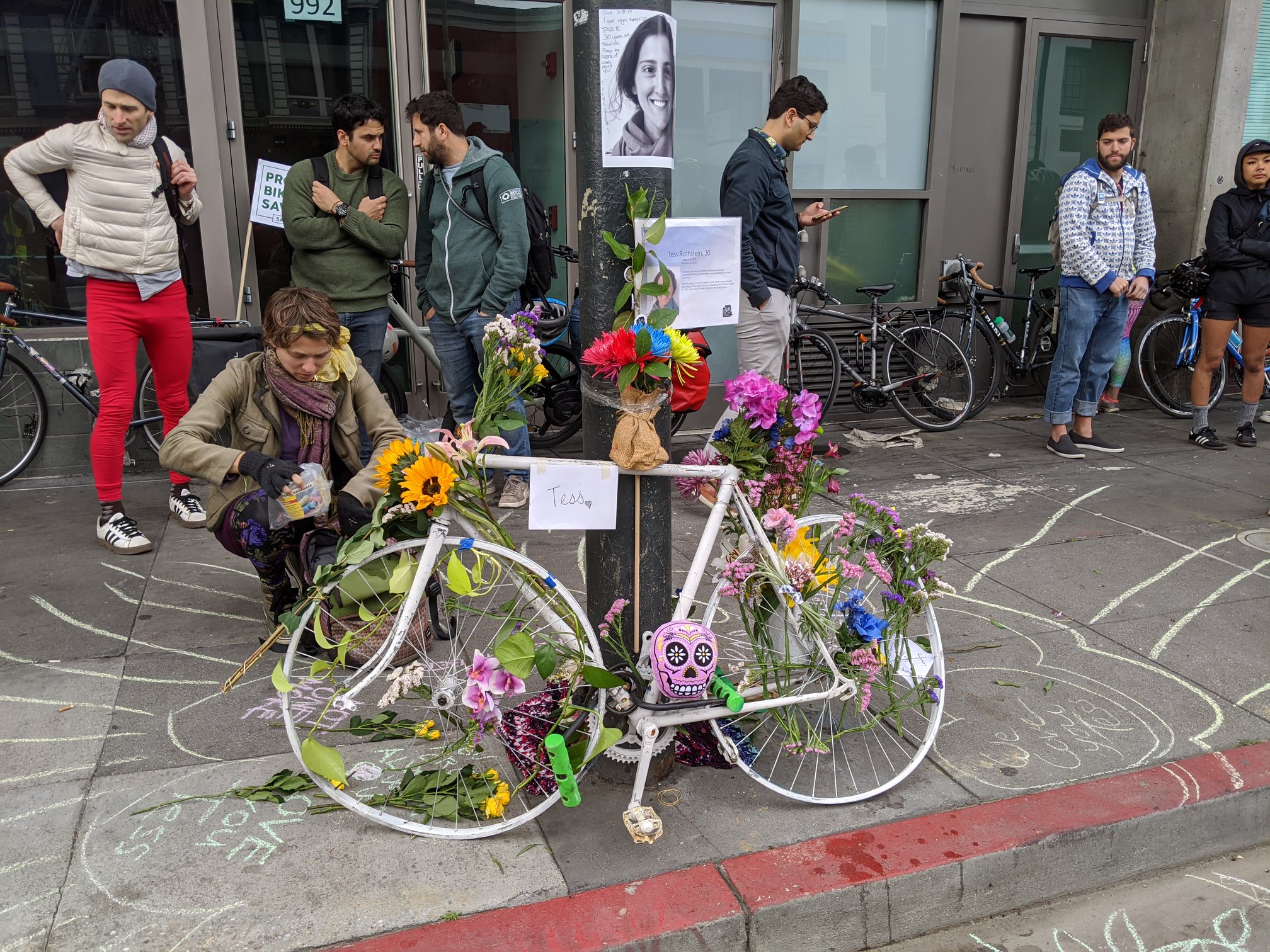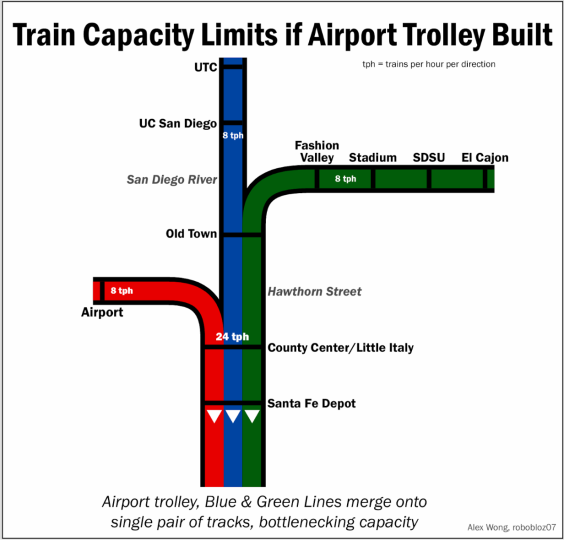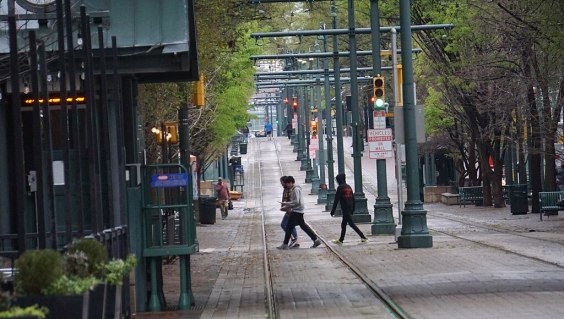Here are a few Streetsblog news nuggets to start your weekend.
The S.F. Board of Supervisors renews stated commitment to Vision Zero
On Tuesday, the San Francisco Board of Supervisors unanimously passed Supervisor Dean Preston’s “Moving Vision Zero forward” resolution, which called on the city to renew its commitment to zero fatal collisions on its streets. From a Walk San Francisco statement:
The resolution calls for the Mayor, SFMTA, SFPD, and other key city agencies to consistently collaborate on safe streets – a core piece of the Vision Zero approach that’s faded since the City first adopted Vision Zero. The resolution also puts two actions that are critical to get – and keep – on track: completing ‘Quick Build’ safety projects on the entire high-injury network by the end of 2024, and launching a comprehensive plan that actually moves the needle with dangerous speeds citywide.
Of course, there's no mystery as to why Vision Zero is failing miserably: every time a serious proposal is made to make a street safe with protected bike lanes or improved intersections, these same politicians and bureaucrats immediately start watering things down and caving to loud parking and driving interests (and sometimes confused advocates even go along with it). Nevertheless, Walk San Francisco is hopeful a renewed, public commitment will at least help cut through some of the political double-talk.
And SFCTA boasts about watered down safety project on Franklin
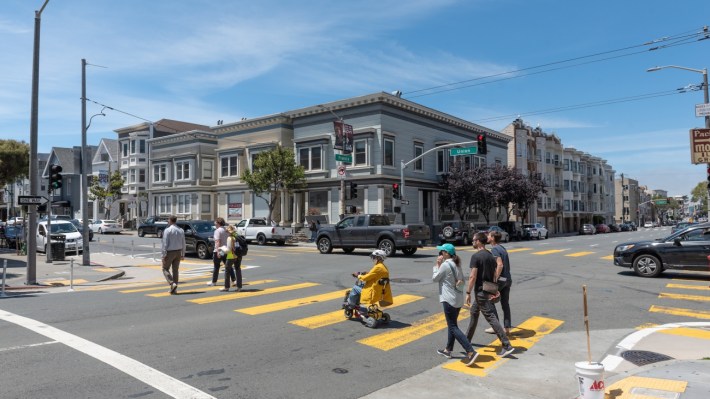
Shortly before the San Francisco Board of Supervisors voted to renew its commitment to Vision Zero, the San Francisco County Transportation Authority boasted about completing its lackluster safety improvements to Franklin--never mentioning that the city blew off the most important aspect of it, a proposed lane reduction. From an SFCTA release:
The Franklin Street Quick-Build Project features:
- Daylighting to increase pedestrian visibility at corners
- Painted safety zones to reinforce pedestrian visibility and encourage vehicles to turn further away from people on the sidewalk
- Slow turn wedges to lower vehicle turning speeds
- Right turn on red restrictions at selected intersections to keep crosswalks clear and reduce potential conflicts between people driving and people walking
These measures focus on pedestrian safety upgrades at the intersections, where vehicle turning speeds and potential conflicts between people driving and people walking are highest. They will create a safer environment for all road users.
As local advocate Shanan Delp quipped: "they did a nice job of the bare minimum."
Streetsblog readers will recall that these safety improvements were in response to a driver killing Andrew Zieman on Franklin in 2021 in front of Sherman Elementary. To try and make Franklin safe, the city proposed and advocates pushed for a lane reduction. However, "levels of service" analysis indicated that it would delay traffic. So, once again, the city ignored its Vision Zero commitment and watered down its "safety project," taking out the single most important aspect. Moreover, what little they did is "made of paint and posts," said Delp, adding there are no plans to make the improvements durable.
Oakland moves abandoned car removal from police to DOT
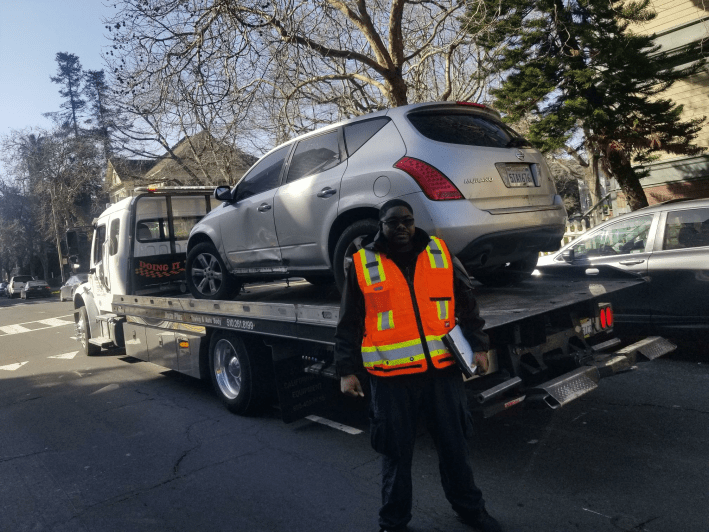
Each year, the city of Oakland receives 20,000 complaints about abandoned vehicles littering the streets. It only tows, however, 2,500 vehicles.
In an attempt to improve those numbers, in 2021 the city of Oakland transferred abandoned and stolen car removal from its police department to its department of transportation. After 18 months of planning, the DOT's new Vehicle Enforcement Unit has gotten to work removing dumped cars. From a city release:
The beefed-up unit includes 13 technicians, one supervisor, and two office support staff. The technicians are organized into three details: six dedicated to Abandoned Auto, four dedicated to Scofflaw and three dedicated to Vehicle Encampment, supporting the City’s Encampment Management Team.
Also according to the city, the impact of the new unit will be measured by the reduction in the number of days to close abandoned auto service requests, the number of blighted vehicles towed, noncompliant parking issues mitigated in Oakland neighborhoods, and the number of vehicle encampment assessments completed. OakDOT is planning to track and publish results for these and other performance measures.
